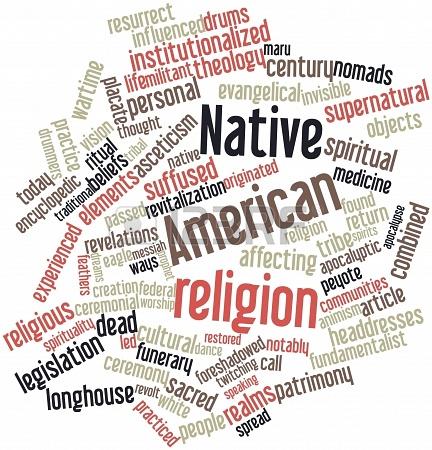While reading Tony Swain’s superlative A Place for Strangers: Towards a History of Australian Aboriginal Being (1993), I came across this passage:
In an argument holding uncanny parallels with my own, Sam Gill has shown how scholars, colonists and Native Americans unwittingly conspired to create Indian Mother Earth. While in Australia the Mother had already emerged with the coming of the Indonesians, there can be no doubt that ethnographers, popular writers, missionaries and others, along with the stark reality of imperial interests, all contributed to the Aboriginal re-creation of the All Mother.
Swain argued that many (if not most) Aboriginal concepts considered by ethnographers and historians to be primordial were in fact relatively new ideas that had been generated by Aborigines as a result of culture contact. He demonstrated, in other words, that Aborigines dynamically and creatively responded to changing cultural conditions. While a core Aboriginal worldview could be identified and remained intact, this worldview was not static and could be amended, extended, and transformed in response to contact with outsiders. Because this was often the case, much Aboriginal ethnography recorded something other than ancient or unaltered ideas.
While there are some similarities between Swain’s argument and Sam Gill’s Mother Earth (1987), there are some important differences. Gill, for instance, does not attempt to identify or reconstruct Native American worldviews. His focus is on a single concept, the Mother Earth idea. He locates the earliest references to “Mother Earth” and traces her subsequent appearances, in the historical record, up to the present. Along the way, he critically assesses the sources for each reference and examines how the “Mother Earth” was transformed by various people over time. While Gill’s scholarship on this limited issue was impeccable, it’s not hard to see how such an argument could arouse passions and opposition.
Gill’s book ignited a firestorm of controversy that began at my institution, the University of Colorado-Boulder, where Gill is a professor of religious studies. At the time Gill published Mother Earth, CU was also home to Lakota scholar Vine Deloria and the notorious academic hack Ward Churchill. Churchill wrote a scathing review of Mother Earth. Like most of Churchill’s work, it’s crap parading under the banner of scholarship. Assuming that Churchill even bothered to read Gill’s book, it’s apparent he did not understand Gill’s limited argument.
But hackademics aside, Vine Deloria’s response is well worth considering. While he did not publish anything formal in response, Deloria condemned Mother Earth in public appearances. In this fascinating listserv exchange among some of those involved, Deloria explained his position. During the course of his ranging and at times provocative discussion, Deloria stated:
I would advocate that we look seriously at the basic data and try to find new ways of presenting the materials – find a new framework in which to examine Native religions.
For some time in the past the effort was to try and discover if and whether the Indians had arrived at the concept of a creator and/or monotheistic religion (Schmidt’s effort to show a “High God” in North American Native religions is characteristic of this phase). This effort, in my opinion, was fruitless and simply was a means of making Indian religion respectable enough that it could be fit into existing intellectual frameworks. For instance, James Walker’s re-arrangement of Sioux spiritual entities into a hierarchy of “gods” demonstrated again that Indian material could be placed in a Western European framework of interpretation.
But what are some of these tribal religions really saying? The idea of wakan, mana, orenda, etc., was the EXPERIENCE of personal energy within the physical universe and could not possibly have been the correlate of Middle Eastern ideas of deities. That is one of my main criticisms of Sam Gill’s Mother Earth venture. Sam keeps using the word “goddess.” I told Ward Churchill and George Tinker that Sam’s framework of interpretation or his selection of data, not Sam as a person, should be the points of attack. If people had listened carefully a century ago, or would really try to hear what Indian’s are talking about now, we could do away with the idea of “gods” – which is a Near Eastern concept – and get to the point that most tribal religions and ceremonies were efforts to achieve a balance with a physical universe inhabited by spiritual entities who were intimately connected to everything else in certain fundamental ways. So the interpretations of the Sun Dance, the Vision Quest, etc., should be seen as Indian versions of Universalist-Unitarian quests for deity, EXCEPT they represented emotional and not intellectual commitment.
This is, in my estimation, mostly correct. I have bolded the parts that accord with my own understandings of Native American worldviews.
My hesitation is that I’m not sure Deloria has gone far enough. By talking about Native “religions,” he is using Western cultural categories and historical taxonomies. He complains that Indian materials have been crammed into “Western European frameworks of interpretation.” I agree. But it seems to me that treating these comprehensive worldviews as “religions” does them a disservice.
Having said this, I also recognize there are good juridical and political reasons for continued use of the term. While it would be nice if we could engage in scholarship without having to worry about all this, we really can’t. We should nonetheless keep these analytical-juridical distinctions in mind. Animist worldviews are not, in my estimation, “religions.” They are more than that.


